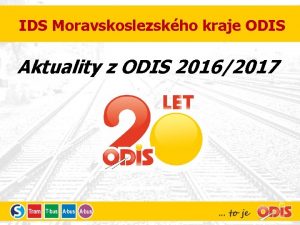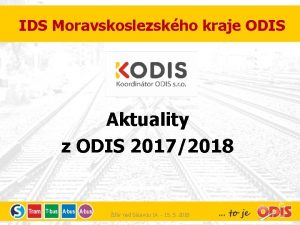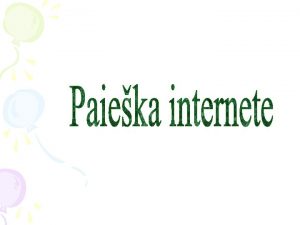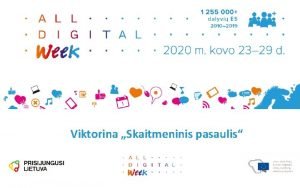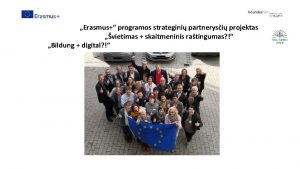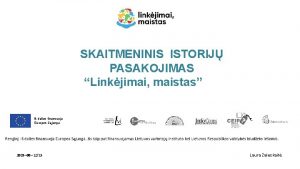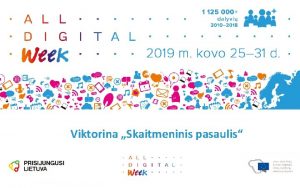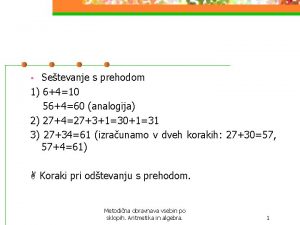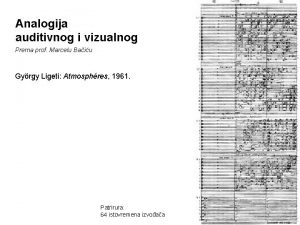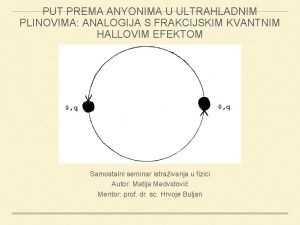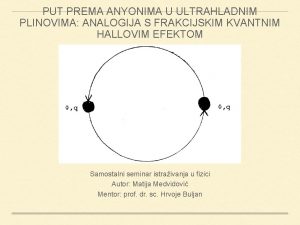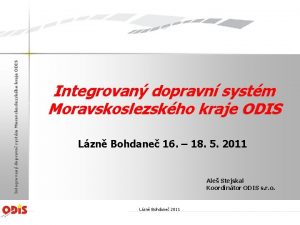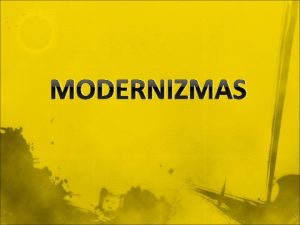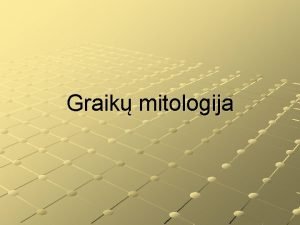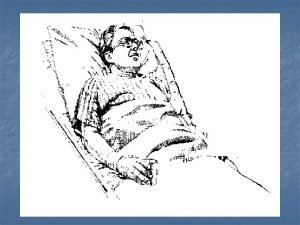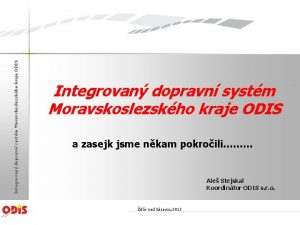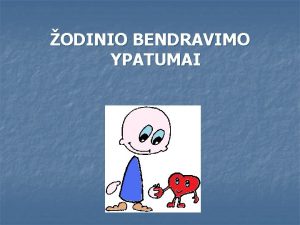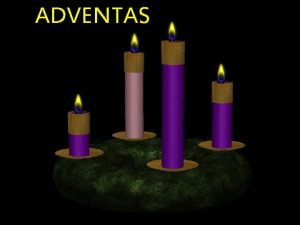Analoginiai kompiuteriai Analogija ir analoginis skaitmeninis odis analogija





























- Slides: 29

Analoginiai kompiuteriai

Analogija ir analoginis / skaitmeninis • Žodis analogija naudojamas dviem reikšmėm – Analoginis gali reikšti diskretinis, skaitmeninis; diskretiniam priešingas: tolydus – Apie kitą reikšmę – kitose skaidrėse toliau • Analoginis ir skaitmeninis signalas:

Analogija • Analogija - tai – pažinimo (kognityvinis) procesas, kai informacija perduodama iš atskiro subjekto (analogo, arba šaltinio) kitam atskiram subjektui (taikiniui, objektui angl. target), • arba tokiam procesui atitinkanti lingvistinė išraiška. • Siauresne prasme, analogija yra išvada (samprotavimas) iš vienos konkretybės kitos konkretybės, priešingai dedukcijai indukcijai ir abdukcijai, kur bent viena iš prielaidų (premisų) arba conclusion yra bendrybė.

Aanalogija: apie ryšį tarp lyginamų dalykų analogijoje • Analogija gali reikšti sąryšį tarp lyginamų dalykų • Tas ryšys gali būti panašumas • Ryšys (matematikoje) apibūdinamas kaip rodyklė (arrow), homomorfizmas, – Paprastai iš sudėtingesnio į paprastesnį • Ryšys (kogn. psichologijoje, literatūros moksle, filosofijoje (ne logikoje)) iš labiau pažįstamos patyrimo srities į mažiau pažintą

Analogija, kaip santykio tapatumas • Senovinėje graikų kalboje αναλογια (analogia) reiškė proporcingumą (lot. proportio). • Pagal tai analogija buvo suprantama kaip santykio tarp bet kurių dviejų sutvarkytų porų – Kantas Critique of Judgment laikėsi ntokios nuomonės. Aristotelian format: • Klausimų pavidalu, pvz. : – Ranka : Delnas : : Koja : ____?

Analogija, kaip bendra abstrakcija • Platonas ir Aristotelis analogiją aiškino plačiau: kaip bendrą abstrakciją. • Analogiški objektai turi bendrą idėją, pavidalą, dėsningumą, požymį, poveikį arba funkciją. • They also accepted that comparisons, metaphors and "images" (allegories) could be used as valid arguments, and sometimes they called them analogies. Analogies should also make those abstractions easier to understand give confidence to the ones using them.

Analogija kaip bendra struktūra • Panaši į Platono ir Aristotelio (kaip bendra abstrakcija), • Tačiau čia – bendra struktūra, struktūrinis atitikimas (angl. structure mapping)

Analog computer • An analog(ue) computer is a form of computer that uses electrical or mechanical phenomena to model the problem being solved by using one kind of physical quantity to represent another. The central concept among all analog computers can be better understood by examining the definition of an analogy. • http: //en. wikipedia. org/wiki/Analog_computer

Iš analoginių kompiuterių istorijos • • • 87 BC Antikythera mechanism constructed on the island of Rhodes. 70 BC Antikythera mechanism losted in shipwreck off the island of Antikythera. 1621 William Oughtred invents the slide rule. 1814 J. A. Hermann invents the planimeter. 1854 Amsler invents the modern polar planimeter. 1878 Lord Kelvin develops the "Harmonic Synthesizer". 1927 Vannevar Bush begins the design of his Differential Analyzer. 1931 Vannevar Bush's first large scale differential analyzer ("Product Integraph") is completed. 1935 Vannevar Bush constructs the second version of his differential analyzer. 1942 Vannevar Bush constructs the Rockefeller Differential Analyzer. 1949 Bill Phillips builds the financephalograph liquid analogue computer. 1946 George Philbrick founds George A. Philbrick Researches Inc. 1952 George A. Philbrick Researches introduce the first commercial operational amplifier. 1956 The Heath Company introduces the Heath Analog Computer 1960 The Heath Company introduces the Heath Educational Analog Computer Model EC-1 1964 Electronic Associates Inc. introduces the Model TR-20 analog computer 1966 Teledyne Inc. acquires Philbrick and Nexus, creating Teledyne Philbrick Nexus 1966 Ed Thorp and Claude Shannon invent the first wearable computer at MIT, to predict roulette wheels.

Skaitmeninės ir analoginės komputacijos palyginimas • Diskretinės (skaitmeninės) ir tolydinės (analoginės) komputacijos schemos

Elektroniai analoginiai kompiuteriai

Analoginis kompiuteris Bombsight • http: //en. wikipedia. org/wiki/Norden_bombsight • http: //www. hill. af. mil/museum/photos/wwii/norden. htm • Norden Bombsight. This device for accurately dropping bombs from aircraft was one of the United States' most closely guarded secrets of World War II. It was originally designed for use on U. S. Navy aircraft by Carl Norden, a Dutch engineer educated in Switzerland who immigrated to the U. S. in 1904. The device used a mechanical analog computer comprised of motors, gyros, mirrors, levels, gears, and a small telescope. The bombardier input the necessary information (airspeed, altitude, etc. ) and the bombsight would calculate the trajectory of the bomb being dropped. Near the target the aircraft would fly on autopilot to the precise position calculated by the bombsight and release the ordnance. Using this device, bombardiers could drop their bombs within a 100 -foot circle from an altitude of well over 20, 000 feet.

Analoginis kompiuteris Bombsight

Analoginis kompiuteris Bombsight

Didžiausias analoginis kompiuteris TRIDAC, Anglija • A number of simulators have been built to represent complete aircraft in flight [. . . ]. One of the most ambitious of these is a machine known as TRIDAC at the Royal Aircraft Establishment, Farnborough [UK]. The name TRIDAC is derived from "three-dimensional analogue computer", which means that it is designed for solving problems of flight in three dimensions. Altogether it contains over 600 d. c. amplifiers and a good deal of electromechanical computing apparatus - an assemblage which requires a large building to house it, complete with offices, test rooms and its own power station. Fig. 5. 1 gives some idea of how the whole complicated machine is arranged. http: //www. science. uva. nl/museum/biganalog. html

The TRIDAC analog computer

Scanimate • • Scanimate is the name for an analog computer animation system developed from the late 1960 s to the early 1980 s. The Scanimate systems were used to produce much of the video-based animation seen on television between the late 1970 s and early 1980 s in commercials, promotions, and show openings. One of the major advantage the Scanimate system had over film-based animation and computer animation was the ability to create animations in real time. The speed with which animation could be produced on the system because of this, as well as its range of possible effects, helped it to supersede film-based animation techniques for television graphics. By the mid-1980 s it was superseded by digital computer animation, which produced sharper images and more sophisticated 3 d imagery. http: //en. wikipedia. org/wiki/Analog_computer_animation Animations created on Scanimate and similar analog computer animation systems have a number of characteristic features that distinguish them from film-based animation: The motion is extremely fluid, using all 60 fields per second (in NTSC format video) rather than the 24 frames per second that film uses; the colors are much brighter and more saturated; and the images have a very "electronic" look that results from the direct manipulation of video signals through which the Scanimate produces the images.

Logaritminė liniuotė, analoginis kompiuteris • • • The slide rule was invented around 1620– 1630, shortly after John Napier's publication of the concept of the logarithm. Edmund Gunter of Oxford developed a calculating device with a single logarithmic scale, which, with additional measuring tools, could be used to multiply and divide. In 1630, William Oughtred of Cambridge invented a circular slide rule, and in 1632 he combined two Gunter rules, held together with the hands, to make a device that is recognizably the modern slide rule. Like his contemporary at Cambridge Isaac Newton, Oughtred taught his ideas privately to his students, but delayed in publishing them, and like Newton, he became involved in a vitriolic controversy over priority, with his one-time student Richard Delamain. Oughtred's ideas were only made public in publications of his student William Forster in 1632 and 1653. In 1722, Warner introduced the two- and three-decade scales, and in 1755 Everard included an inverted scale; a slide rule containing all of these scales is usually known as a "polyphase" rule. In 1815, Peter Roget invented the log slide rule, which included a scale displaying the logarithm of the logarithm. This allowed the user to directly perform calculations involving roots and exponents. This was especially useful for fractional powers. http: //en. wikipedia. org/wiki/Slide_rule


Elktroninis analoginis kompiuteris; veikimo pagrindas

Analog Computer Introduction • 5 Basic blocks needed – – – Integrator Gain Summer Multiplier Constant • Various sources – e. g. sine, ramp, impulse • Math blocks – e. g. trig functions, exponentials/logarithms

What is an Analog Computer? • A ‘computer’ for solving differential equations • A block diagram solver (e. g. Math. Works Simulink)

Example - Second Order System

Literatūra • Analog_computer. http: //en. wikipedia. org/wiki/Analog_computer • Lecture 20: Analog vs Digital. STS 3700 B 6. 0. HISTORY OF COMPUTING AND INFORMATION TECHNOLOGY. http: //www. yorku. ca/sasit/sts 3700 b/lecture 20 a. html • Analog Computer Museum An online museum of analog computers and their history. www. dcoward. best. vwh. net/analog/ •

Seminaro užduotis • IB. Pagal duotą temą surasti internete ir parengti medžiagos kompiliaciją ir analizę. Temos: – (IB I grupei) Analoginių kompiuterių istorija: pasirinkti vieną ir išsamiai išnagrinėti – (IB II grupei). Elektroninis analoginis kompiuteris pasirinkti vieną ir išsamiai išnagrinėti – VIV. Analoginis kompiuteris šiuolaikinėse technologijose • Nurodyti tiksliai šaltinį (autorius, universitetas arba kita institucija, jei kursas, kam dėstomas ir pan. ) • Pateikti seminare. • Kaupti atliktas kiekvieno seminaro užduotis.

Analog and Digital Continuous Analog Original – Sampling/Encode – Digital (Arbitrary) Discrete – Non-Continuous Code – Manipulate Code – Decode back to Analog

Analogy • • • Analogy is either the cognitive process of transferring information from a particular subject (the analogue or source) to another particular subject (the target), or a linguistic expression corresponding to such a process. In a narrower sense, analogy is an inference or an argument from a particular to another particular, as opposed to deduction, induction and abduction, where at least one of the premises or the conclusion is general. The word analogy can also refer to the relation between the source and the target themselves, which is often, though not necessarily, a similarity, as in the biological notion of analogy. With respect to the terms source and target, there are two distinct traditions of usage: – The logical and mathematical tradition speaks of an arrow, homomorphism, mapping, or morphism from what is typically the more complex domain or source to what is typically the less complex codomain or target, using all of these words in the sense of mathematical category theory. – The tradition that appears to be more common in cognitive psychology, literary theory, and specializations within philosophy outside of logic, speaks of a mapping from what is typically the more familiar area of experience, the source, to what is typically the more problematic area of experience, the target.

Models and theories of analogy • Identity of relation. In ancient Greek the word αναλογια (analogia) originally meant proportionality, in the mathematical sense, and it was indeed sometimes translated to Latin as proportio. From there analogy was understood as identity of relation between any two ordered pairs, whether of mathematical nature or not. Kant's Critique of Judgment held to this notion. Kant argued that there can be exactly the same relation between two completely different objects. The same notion of analogy was used in the US-based SAT tests, that included "analogy questions" in the form "A is to B as C is to what? " For example, "Hand is to palm as foot is to ____? " These questions were usually given in the Aristotelian format: – HAND : PALM : : FOOT : ____ • Shared abstraction. Greek philosophers such as Plato and Aristotle actually used a wider notion of analogy. They saw analogy as a shared abstraction (Shelley 2003). Analogous objects shared an idea, a pattern, a regularity, an attribute, an effect or a function. They also accepted that comparisons, metaphors and "images" (allegories) could be used as valid arguments, and sometimes they called them analogies. Analogies should also make those abstractions easier to understand give confidence to the ones using them.

Models and theories of analogy • Identity of relation. In ancient Greek the word αναλογια (analogia) originally meant proportionality, in the mathematical sense, and it was indeed sometimes translated to Latin as proportio. From there analogy was understood as identity of relation between any two ordered pairs, whether of mathematical nature or not. Kant's Critique of Judgment held to this notion. Kant argued that there can be exactly the same relation between two completely different objects. The same notion of analogy was used in the US-based SAT tests, that included "analogy questions" in the form "A is to B as C is to what? " For example, "Hand is to palm as foot is to ____? " These questions were usually given in the Aristotelian format: – HAND : PALM : : FOOT : ____ • Shared abstraction. Greek philosophers such as Plato and Aristotle actually used a wider notion of analogy. They saw analogy as a shared abstraction (Shelley 2003). Analogous objects shared an idea, a pattern, a regularity, an attribute, an effect or a function. They also accepted that comparisons, metaphors and "images" (allegories) could be used as valid arguments, and sometimes they called them analogies. Analogies should also make those abstractions easier to understand give confidence to the ones using them.


